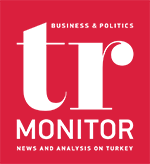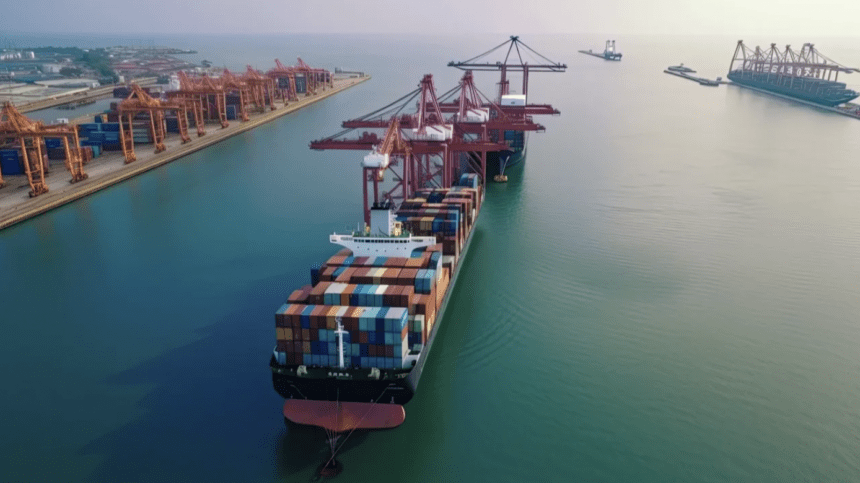HUSEYIN GOKCE, IMAM GUNES, SABIHA TOPRAK, TUBA CANPOLAT
Starting from 2024, the Ministry of Trade will publish province-based export data according to the place of production. Stating that a healthier incentive infrastructure will be created with the new regulation, the Anatolian business world wants a similar regulation to be made in taxation by taking one more step.
The Ministry of Trade announced that in the foreign trade data to be announced starting from the new year, the provinces where the products subject to exports are produced will be taken into account instead of the province where the company headquarters is located.
The “Foreign Trade Statistics by Provinces” announced by the Turkish Statistical Institute (TurkStat) are based on the province where the company headquarters is located. This situation may lead to a clustering of export statistics in the direction of the central province for companies with different headquarters and production provinces.
In addition, exports made through foreign trade companies are recorded in the province where the foreign trade company is located instead of the province where the production takes place. In order to measure export statistics arising from the production structure in the province, “Provincial Export Statistics According to the Production Location of Firms” was created as a result of a joint study carried out with the participation of the Ministry of Trade, the Ministry of Industry and Technology and TurkStat. The joint study has been ongoing for about a year.
Will allow detailed analysis
In order to identify the provinces where production was carried out, the data on exporters/manufacturers from the Ministry of Trade, industrial registry certificate data from the Ministry of Industry and Technology, and the records of the Social Security Institution and the Revenue Administration were matched.
Provincial export statistics based on firms’ production locations are tentatively planned to be published in the “Monthly Foreign Trade Data Bulletin” of the Ministry of Trade starting from January 2024. In addition, the “Foreign Trade Statistics” to be published by TurkStat on 29 February 2024 within the scope of the Official Statistics Program will be shared with the public together with the January 2024 News Bulletin.
In export statistics by production locations, it is observed that exports of industrialized provinces with high production volume stand out. The statistics obtained in this context allow for detailed analysis by province, product, country and similar sub-divisions and include important indicators such as the technological level of exports by province. Thus, this study is expected to make significant contributions to the data-based determination of province-based/regional policies.
The new regulation was welcomed by Anatolian cities, especially those with production infrastructure whose headquarters are located in other cities, especially Istanbul.
Ayhan Zeytinoglu: Infrastructure ready for tax
Ayhan Zeytinoğlu, President of Kocaeli Chamber of Industry, noted that they have been emphasizing for a long time that official data announced by institutions, especially export figures, do not fully reflect Kocaeli’s potential due to the fact that they are announced on the basis of company headquarters. Zeytinoglu said, “We also know that if the official data announced is not healthy, the incentives and guidance to be given by the state will not match one-to-one. In this context, it is pleasing that export statistics will be announced according to the production locations of the companies.” Stating that the same problem is also experienced in taxes, Zeytinoğlu said, “In fact; I would like to remind you that there is a legal infrastructure for companies to pay their Corporate Taxes in the province where they are located.”
Fikret Kileci: We have been waiting for the regulation for years
Fikret Kileci, Coordinator President of the Southeastern Anatolia Exporters’ Associations, called it “a very correct decision” to register production wherever it is produced. Expressing the view that “this should not remain with this statement, the revenues related to production should also remain in the same centers,” Kileci said, “Since the regional activity is covered by the regional budget, the distribution is made accordingly. In the production made, we distribute according to the affiliation areas of exporters’ associations. If the product is not in our field of activity, the majority of the income goes to the association in the field of activity.” Pointing out that there is a great diversity of sectors in Southeastern Anatolia, Kileci said, “This practice, which we have wanted for years, should be followed to the end.”
Aiming for a tantalizing effect on incentives
The new regulation raised questions among exporters. The heads of exporters’ unions informed the EKONOMI daily that they will meet with the Ministry of Trade to get detailed information on the issue. Noting that there is a question mark on how the data of exporter companies that produce in incentive zones will be entered into the system, exporters said, “The data of exporter unions will not change in the process. Our ministry will do the work. We will continue with the same system. Because exporters’ associations are based on the exit declaration, the location of the company is important. We believe that this study aims to show the production and exports of the regions clearly in the long term and to have an attractive effect on incentives for those provinces. We will meet with the Ministry and learn the process in detail.”
Will it change the incentive regions?
There is a debate on whether the change in the methodology of export statistics, whereby exports are recorded in the province of production, will change the incentive regions in which provinces are located. In Turkey, provinces are divided into 6 incentive regions according to the socioeconomic development index (SEGE). The most developed provinces are in Region 1, while the least developed provinces are in Regions 5 and 6. The SEGE consists of 52 criteria such as unemployment, population density, credit per capita and literacy. One of these criteria is the amount of exports per capita. Sources informed to the EKONOMI daily that the change in the methodology will change the amount of exports per capita of the provinces, but this change will not be enough to change the incentive region in which the province is located.










